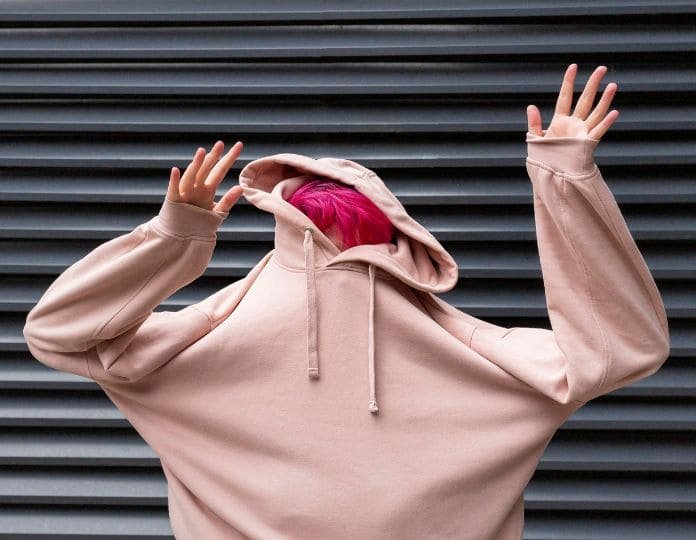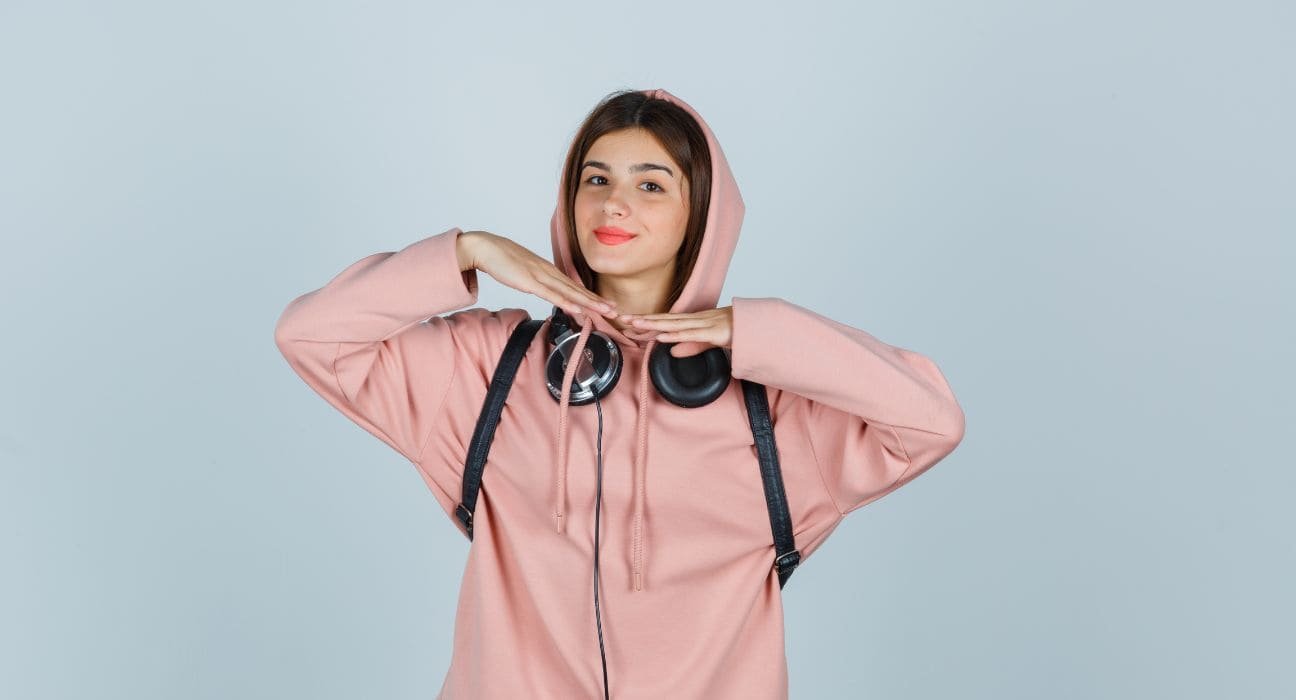In nearly a decade of working in schools, I’ve consistently observed how each year introduces new generational shifts in children of all ages. It’s intriguing to witness how every new generation brings forth its unique trends, behaviors, and values. While adapting to these changes can be challenging, it also presents an opportunity for personal learning and development.
One recent observation has made me ponder why teenagers today continue to wear hoodies even in the sweltering summer heat. It appears that wearing hoodies is no longer just a fashion choice but may have a profound psychological connection within Generation Z. I was deeply intrigued by this phenomenon and immediately set out to understand the reasons behind teenagers’ newfound love and comfort for hoodies. I decided to observe and speak with the students at the school where I currently work to gain some insights. The responses I received from the students were truly enlightening and thought-provoking!
The recurring words I heard—like “safety net,” “secure,” “vulnerable,” “comfortable,” and “feeling confident”—left me astonished. It’s remarkable how wearing a hoodie can evoke such deep feelings and emotions! I learned that wearing a hoodie consistently can signify various things, depending on the context and the individual’s personal preferences and circumstances.
Read more: How to Keep Teenagers Safe on Social Media?
The most obvious reason is to tackle the colder climates, people may wear hoodies all the time as a practical way to stay warm. Likewise, individuals who work or spend extended periods in air-conditioned environments might choose to wear a hoodie to offset the cool temperatures. And the next most obvious is that the hoodie has indeed become a fashion staple for many. Some individuals simply find hoodies comfortable and appreciate them for their relaxed fit. We’re more interested in exploring the less obvious reasons, aren’t we?
Read More: Building Bridges: Nurturing Open Communication with Your Teenager
Adolescence is widely known as a turbulent phase characterized by many crucial moments for teenagers. During these developmental years, hoodies have emerged as a means to provide a sense of security. Given the prevalence of low self-esteem and anxiety among teenagers today, the oversized design of hoodies enables them to conceal physical insecurities, fostering a sense of security. Hoodies can offer a degree of privacy or anonymity, serving as a barrier between the wearer and the outside world. This choice may help individuals, especially those who are more introverted or value their privacy, feel more comfortable and protected. Many teenagers believe that wearing a hoodie can help them avoid unwanted attention or criticism. Who would have imagined that hoodies could serve as both a warm, cozy garment and a sort of personal hugger?
Read More: A glance into the life of Introverts
As adults, we have all experienced being teenagers, but issues related to self-identity were perhaps not as prevalent back then, possibly because of different responsibilities and priorities. However, it is also crucial to recognize that the world has changed, generations have evolved, and social acceptance has become a priority. Self-expression and identity are crucial aspects of teenage development. During adolescence, individuals often explore different ways to express themselves, such as through clothing, hairstyles, music preferences, and social interactions. These expressions help teenagers discover who they are, what they value, and where they fit in society. Hoodies are a versatile garment that can serve as a means of self-expression and identity. While commonly linked to casual, relaxed fashion, they can also be used to project a specific image or demonstrate affiliation with a particular group or subculture. This seemed reminiscent of a cult to me!
Read More: The Psychology of Self-Perception
During my psychology studies, I read deeply about Body image issues and Anxiety disorders. Little did I anticipate that I would one day be drawing connections between these disorders and a piece of clothing! Body dysmorphia is a mental health condition characterized by excessive concern or preoccupation with perceived flaws in physical appearance. It is becoming increasingly common among teenagers, who struggle to cope with their body image and develop a distorted perception of themselves. Hoodies are a way to conceal perceived flaws or to feel more comfortable in social situations.

Hoodies can control one’s appearance, offering a way to hide or minimize perceived imperfections. I wonder if some adults can also relate to this experience? Honestly, I really like wearing hoodies. However, looking back, I’m wondering if I unconsciously chose to wear them on days when I was feeling down or trying to conceal a flaw in my body! Apparently, hoodies can also help with anxiety issues. Hoodies can create a sense of security for the wearer, and the soft fabric can also induce a feeling of calmness, particularly for those prone to anxiety.
Anxiety is characterized by persistent fear, apprehension, and a sense of impending doom, leading to heightened vigilance and stress. This can have negative effects on the body. While there is no concrete evidence that hoodies can directly address anxiety, it is safe to believe they could act as a placebo, providing a sense of comfort and potentially boosting confidence. One hoodie enthusiast shared that they feel more confident and comfortable during stressful times when wearing a hoodie.
Read More: Are you suffering from Identity Crisis?
Have you ever considered choosing your outfit based on how you feel? For me, dressing up has always been solely based on the occasion, without considering my mood for the longest time. Clothing plays a significant role in how people perceive each other, often leading to quick judgments. For instance, someone with a stained shirt might be unfairly labeled as a slob, while another wearing pajama pants might be seen as lazy, even though there could be valid reasons for their attire. Despite the lack of control over their clothing, most people may not give them the benefit of the doubt. Given this, it’s important to consider whose perceptions you want to influence and how you wish to be perceived. Do you believe that wearing hoodies every day will help create the impression you desire?
Researching this topic and talking to many teenagers has truly changed my perspective. Previously, I thought hoodies were only for protection from the weather. Now, I understand they have various other meanings and surprisingly positive effects too. This shift in mindset has been significant for me. Ultimately, the decision to use a hoodie in this manner is a personal one, and what may be effective for one individual may not be for another. However, if wearing a hoodie contributes to feeling more empowered and self-assured in confronting insecurities and vulnerabilities, it can be a beneficial resource in our self-care regimen and not necessarily cater to teens only!
This brings me back to the significance of paying attention to one’s mental health. Understanding the psychological reasons behind a teenager’s fixation on hoodies can offer valuable insights into their needs during this critical developmental stage. As parents, it’s crucial to find a balance between our expectations and those of our teens, ensuring they feel understood and valued. It’s important to remember that a teenager’s clothing preferences are just one aspect of how they express themselves.
It’s comforting to wrap oneself up in a hoodie, essentially using it as a “blanket.” However, it’s crucial to recognize the right time to identify, seek help, and open up about any issues. Hopefully, this generation that embraces hoodies is also contributing to breaking down societal biases or stereotypes directed at young people.













Leave feedback about this